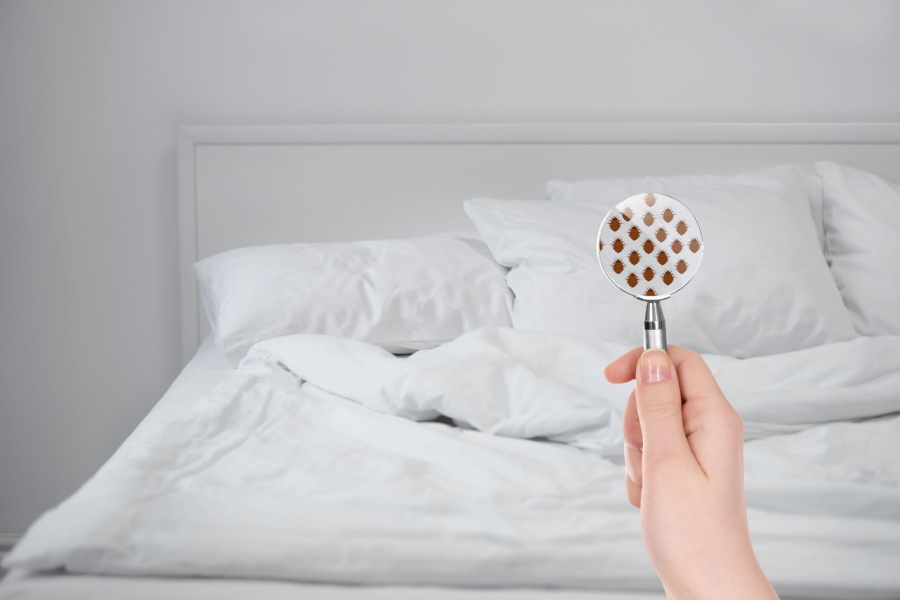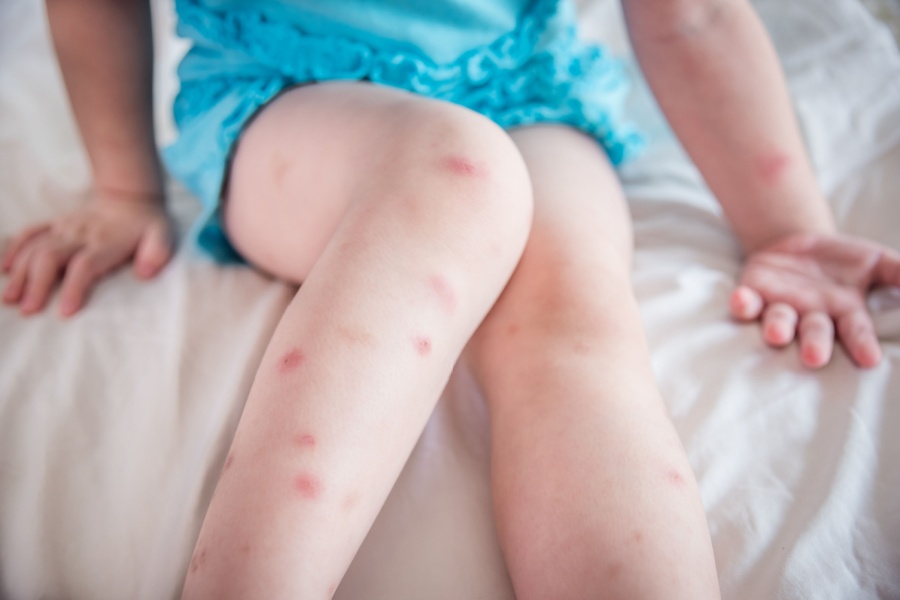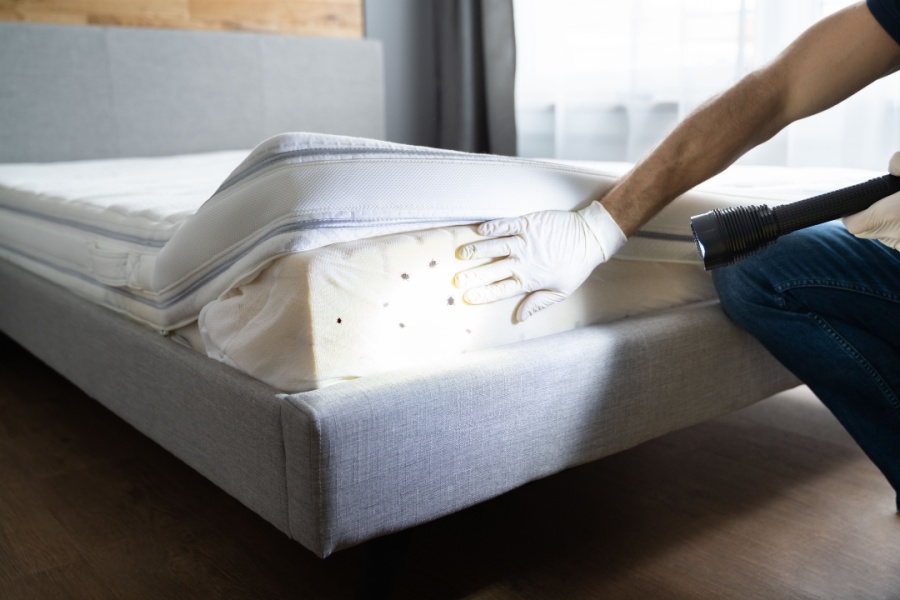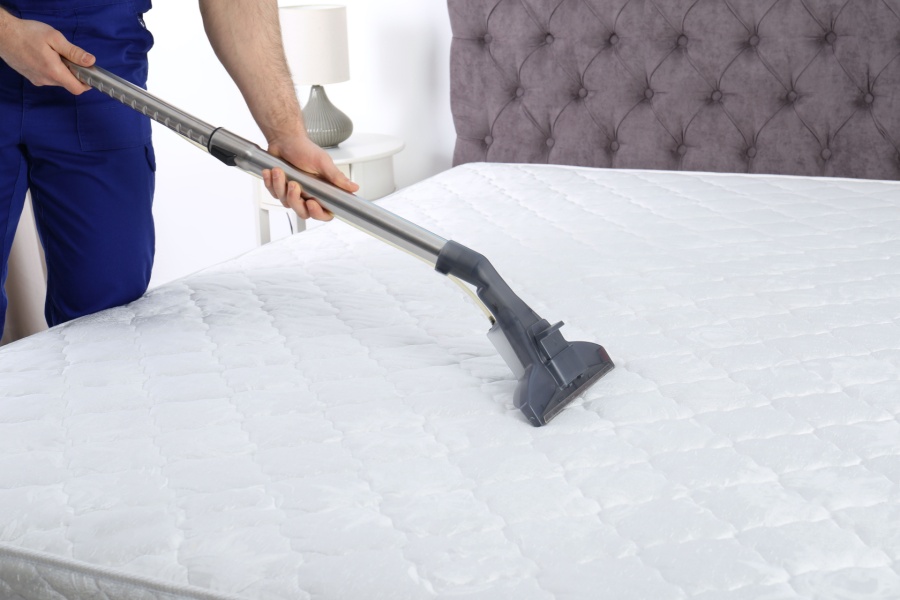Bed bugs have become a persistent challenge for homeowners and travelers alike, robbing everyone of a peaceful night’s rest with their itchy bites. So, knowing what the signs are of bed bugs in your home or other types of areas is important in keeping a clean space.
In this guide, we explore what bed bugs are, how to check for them, methods to get rid of them, and proactive pest management tips to prevent infestations. By understanding these aspects, you can effectively safeguard your home and ensure a restful and pest-free living environment.
What Are Bed Bugs?
Bed bugs are small insects that are experts at hiding in the cracks and crevices of your home. These brownish-red pests primarily bite humans and animals alike to feed on their blood, causing itchy welts on the skin and general discomfort.
Some of their physical features are:
- Size: Adult bed bugs are typically 4 to 7 millimeters in length, roughly the size of an apple seed.
- Color: Unfed bed bugs are flat and reddish-brown, while those that have fed may appear darker and more elongated.
- Shape: Oval-shaped with a flattened body, allowing them to easily hide in tight spaces.
Their physical characteristics make them adept at finding good hiding spots in your home. It’s important to keep a lookout for their signs to properly address infestations.
The Bed Bug Situation in Singapore
With the recent surge of bed bugs in Paris and South Korea, other densely populated areas in Asia are at risk of infestation surges. Countries like Hong Kong, Japan, and Singapore are seeing an increase in reports about these little critters and inquiries about eradicating them in living spaces.
It is said that the rise of bed bug infestations can be linked to human travel. And since they’re notoriously known for being hitchhikers hiding in the crevices of suitcases and clothes, they can be carried by travelers to new places. With Singapore holding various notable events like The Formula 1 Grand Prix, Coldplay: Music of the Spheres concert, Taylor Swift’s The Eras Tour, and the Harry Styles Love on Tour concert, the increase in tourism is inevitable––which in turn puts the country at risk of bed bug infestations.
Given the circumstances, it’s important to remain vigilant in taking care of your living space. Learning how to check for bed bugs and implementing steps to get rid of them can help you avoid further infestations. Treatment and prevention are crucial steps in mitigating this health risk from your space and your community.
How to Check for Bed Bugs in Your Home
If you suspect bed bugs in your space, learning how to identify them is the next step. Knowing their features and behaviors can confirm their presence and enable you to create effective bed bug pest control strategies. A few steps you can do to check for them are:

1. Inspecting Common Hiding Spots
Begin your inspection by checking common hiding spots, including seams, folds, and crevices of mattresses, box springs, and upholstered furniture. Examine cracks and crevices in walls, baseboards, and nearby furniture.
2. Look for Telltale Signs
Bed bugs leave several signs that indicate their presence. Some of them are:
- Blood Stains on Bed Sheets: Bed bugs can be accidentally crushed after feeding and leave behind small blood stains on your bedding.
- Dark Stains or Fecal Spots: Bed bugs excrete digested blood, leaving behind dark stains or fecal spots on surfaces. These spots are often tiny and may resemble ink stains.
- Eggshells and Shed Skins: Bed bugs go through multiple life stages, shedding their shells as they grow. Look for tiny, pale yellow eggshells and translucent skins in and around hiding spots.
- Musty Odor: In severe infestations, bed bugs can release a sweet yet musty odor. This odor is often described as unpleasant and may be noticeable in rooms where bed bugs are concentrated.

3. Identify Bites and Patterns
Bed bug bites often appear in clusters or a linear pattern on exposed skin, such as the face, neck, arms, and hands. While bites are not definitive proof, their specific pattern can be a sign of bed bug activity.
4. Use Bed Bug Traps
Place bed bug traps under bed legs and in areas where bed bugs are likely to travel. Traps can help monitor and capture any bed bugs, aiding your detection of them.

5. Professional Inspection
If you’re uncertain or if you suspect an infestation, consider hiring a professional pest control service in Singapore for a thorough inspection. These experts have the knowledge, experience, and equipment to successfully detect hidden bed bug activity.
Knowing how to identify bed bugs at home is important in keeping infestations from getting worse. This proactive step can help you prevent further breeding in your space and maintain a pest-free environment.
How to Get Rid of Bed Bugs in Your Home
Now, if you’re infested with bed bugs on your property, there are a few effective ways you can get rid of them.
- Isolate Infested Items: Seal infested items in plastic bags to prevent bed bugs from spreading. Dispose of infested items if necessary to focus on reducing their breeding areas or hiding spots.
- Wash and Heat Treat Bedding: Put your bedding, linens, and clothing in hot water and dry them in the highest heat setting. Heat treatments can help eliminate bed bugs at various life stages.
- Vacuum Thoroughly: Use a vacuum with a HEPA filter to clean areas where bed bugs hide. Pay close attention to seams, folds, and crevices in mattresses and furniture.
- Reduce Clutter: Declutter living spaces to eliminate hiding spots for bed bugs. Less cluttered spaces mean they have fewer opportunities to find breeding areas.
- Seek Professional Pest Control: If you’re suffering from severe infestations or if your DIY efforts are unsuccessful, consult a licensed pest control professional. The reason to hire a pest control company is their experience and skill in using a combination of treatments to eliminate bed bugs effectively.
Combating a bed bug infestation requires multiple approaches. Whether through meticulous cleaning or seeking professional assistance––the key lies in a proactive and persistent effort to eliminate bed bugs.
Remember, vigilance and prompt action are essential in ensuring a comfortable living environment for you and your family.

How Do You Prevent Bed Bugs from Getting In Your Home
After treating the bed bug infestation in your home, further guarding your space is the next and final crucial step in a bed bug-free home. Some effective strategies to protect your house from these pests are:
- Inspect Secondhand Items: Before bringing used clothing, mattresses, or furniture into your home, thoroughly inspect them for any signs of bed bugs. In case you bought used clothing, launder them in hot water and dry them on high heat to kill any potential bed bugs. Just be wary of buying or getting items from unknown or infested sources.
- Be Cautious While Traveling: Learning how to check for bed bugs in a hotel is an important step that can prevent you from bringing home pests. Before unpacking, check for signs of bed bugs and keep your luggage elevated and away from beds and upholstered furniture. Once you’ve returned to your home, inspect your luggage and clothing for any hitchhiking bed bugs before bringing them into your house.
- Encase Mattresses and Box Springs: Use bed bug-proof encasements for mattresses and box springs to prevent bed bugs from staying in these areas.
- Seal Entry Points: Seal the cracks and crevices on your walls, baseboards, and furniture where bed bugs can hide. You can use caulking guns and sealants to close the gaps around windows and doors.
- Regular Vacuuming: Vacuum frequently and pay attention to seams, folds, and crevices of mattresses, furniture, and baseboards. Dispose of the vacuum bags or clean the vacuum canister outside your property to prevent bed bugs from re-infesting your home.
- Avoid DIY Pesticide Applications: Avoid using pesticides without proper knowledge and training. Inappropriate pesticide use may not effectively control bed bugs and can be harmful to your health because of its strong chemical ingredients.
- Be Mindful of Guests: When hosting guests, especially those who have recently traveled, take precautions to minimize the risk of bed bugs entering your home. Politely ask your friends or family about their recent travels and the bed bug preventive measures they took. This can help you safeguard your home from infestations.
- Monitor Pets: Check your pets for any signs of bed bugs, particularly if they spend time in areas where bed bugs might be present.
By incorporating these preventive measures into your routine and remaining cautious, you can significantly reduce the likelihood of bed bugs entering and infesting your home. The main takeaway is to be familiar with bed bug activity and to thoroughly clean your space.
Getting Rid of Bed Bugs with PestBusters
Understanding what bed bugs are, how to check for them, and the effective methods to get rid of and prevent them is important in creating a pest-free living environment. By following these strategies, you can significantly improve the well-being of your space and stop the spread of bed bugs.
However, for a thorough inspection and pest management of your home, PestBusters is your go-to authority in pest control. With our expert services, we can ensure that your space is free from bed bugs and other pests that may have taken residence in your home. Our team of professionals can create custom pest management strategies that fit your needs, and take care of pest-related issues you may be having.
There’s no need for you to worry about pest management because PestBusters is here to help. Learn more about our services today and get in touch with us.

